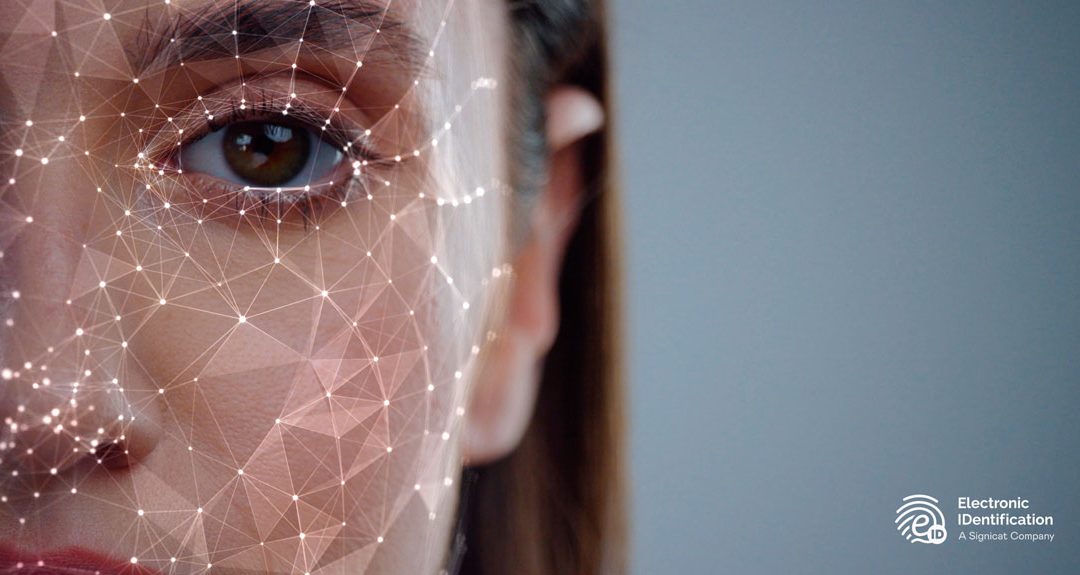What is facial recognition, also known as face recognition? How does facial recognition work? What practical applications can it have? Biometrical facial recognition is one of the most demanded identification solutions for online identity verification.
Find out in this article all the points mentioned above.
WHAT IS FACIAL RECOGNITION? THE MEANING OF FACE RECOGNITION AND HOW IT WORKS
By definition, facial recognition refers to the technology capable of identifying or verifying a subject through an image, video, or any audiovisual element of his face. Generally, this identification is used to access an application, system, or service and it works like a face scanner.
It is a method of biometric identification that uses that body measures, in this case, face and head, to verify the identity of a person through its facial biometric pattern and data. The technology collects a set of unique biometric data of each person associated with their face and facial expression to identify, verify and/or authenticate a person.
If you are interested in knowing how to make your onboarding and KYC process go from 3 weeks to 3 minutes, download this guide.
FACIAL RECOGNITION SOFTWARE
The face identifier procedure simply requires any device that has digital photographic technology to generate and obtain the images and data necessary to create and record the biometric facial pattern of the person that needs to be identified.
Unlike other identification solutions such as passwords, verification by email, selfies or images, or fingerprint identification, Biometric facial recognition uses unique mathematical and dynamic patterns works as a face scanner that make this system one of the safest and most effective ones.
The objective of face recognition is, from the incoming image, to find a series of data of the same face in a set of training images in a database. The great difficulty is ensuring that this process is carried out in real-time, something that is not available to all biometric face recognition software providers.
And where is facial recognition used? The facial recognition process can perform two variants depending on when it is performed:
- The one in which, for the first time, a facial recognition system addresses a face to register it and associate it with an identity, in such a way that it is recorded in the system. This process is also known as digital onboarding with facial recognition.
- The variant in which the user is authenticated, before being registered. In this process, the incoming data from the camera is crossed with the existing data in the database. If the face matches an already registered identity, the user is granted access to the system with his credentials.
HOW DOES FACIAL RECOGNITION WORK?
How reliable is facial recognition? How does face recognition work? Face recognition systems work by capturing an incoming image from a camera device in a two-dimensional or three-dimensional way depending on the characteristics of the device.
These compare the relevant information of the incoming image signal in real-time in a photo or video in a database, being much more reliable and secure than the information obtained in a static image. This biometric facial recognition procedure requires an internet connection since the database cannot be located on the capture device as it is hosted on servers.
In this comparison of faces, it analyses mathematically the incoming image without any margin of error, and it verifies that the biometric data matches the person who must use the service or is requesting access to an application, system, or even building.
Thanks to the use of artificial intelligence (AI) and machine learning technologies, face recognition systems can operate with the highest safety and reliability standards. Similarly, thanks to the integration of these algorithms and computing techniques, the process can be carried out in real-time.
BIOMETRIC FACIAL RECOGNITION USES CASES
Face identity recognition uses focus on verification or authentication. This technology is used, for example, in situations such as:
- Second authentication factor, to add extra security in any log-in process.
- Access to mobile applications without a password.
- Access to previously contracted online services (login on online platforms, for example).
- Access to buildings (offices, events, facilities of any kind …).
- Payment method, both in physical and online stores.
- Access to a locked device.
- Check-in in tourist services (airports, hotels…).
WHAT ARE THE BENEFITS OF FACIAL RECOGNITION?
Sometimes we are asked, what are the advantages of facial recognition. Facial recognition offers several benefits in the identity verification process for remote entry.
– A fastest process: facial recognition allows for fast and smooth remote identity verification.
– User experience: facial recognition systems offer a unique, smooth, and fast user experience, avoiding the need for time-consuming office visits or video conferences and wait times.
– Security: Like fingerprints or voice, each face is unique and has inimitable characteristics. Facial recognition systems, programs, or software compare through facial biometrics and facial recognition algorithms.
– Compliance: Facial recognition through video identification is the only method recognised as a standard for remote identity verification for high-risk operations (opening bank accounts, signing contracts, etc.).
SMILEID AND VIDEOID: WHEN AI AND FACIAL RECOGNITION MEET
At Electronic IDentification (eID) we have developed VideoID, a video identification technology based on AI face recognition, Machine Learning, and biometrics to verify your customer’s identity any time and anywhere in total compliance; and SmileID, a biometric face recognition software based on face recognition technology.
VideoID, the only end-to end facial recognition system that allows a remote identity verification to onboard new users with the same level of security as face to face identification.
SmileID, unlike other unsafe and non-reliable authentication face recognition softwares, uses AI face recognition algorithms and machine learning to offer total reliability, while complying with the highest safety standards and the strictest regulations. In addition, it is a versatile and universal system that adapts to any device and channel.
If you are interested in getting more information about customer identification, download this guide to know all the details.






